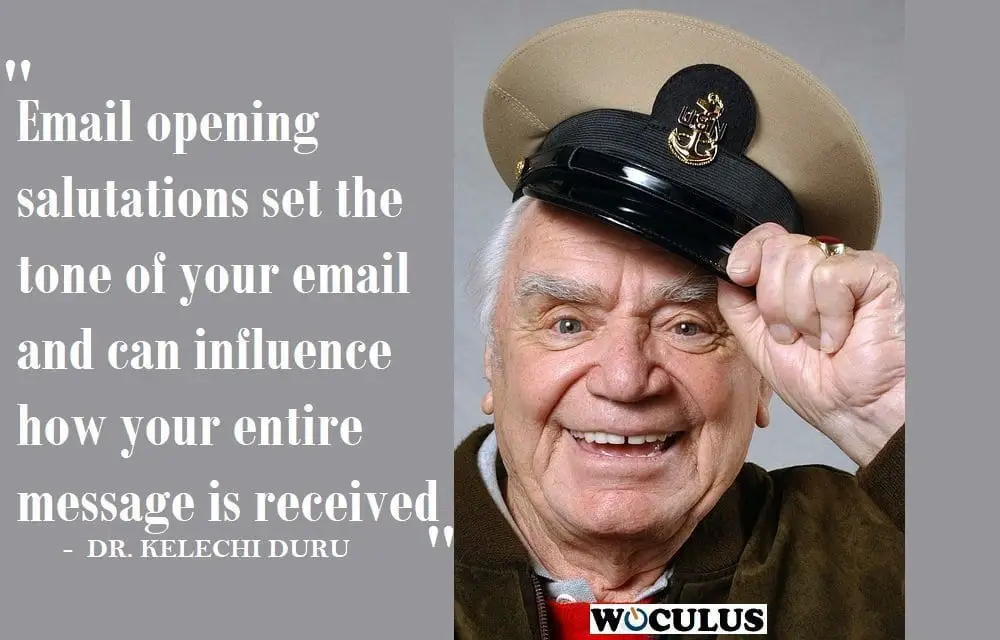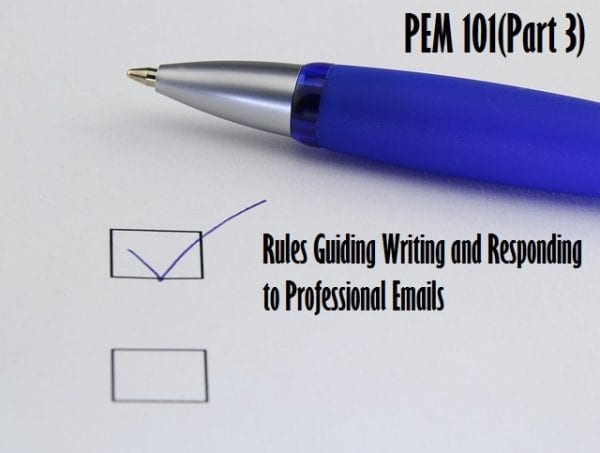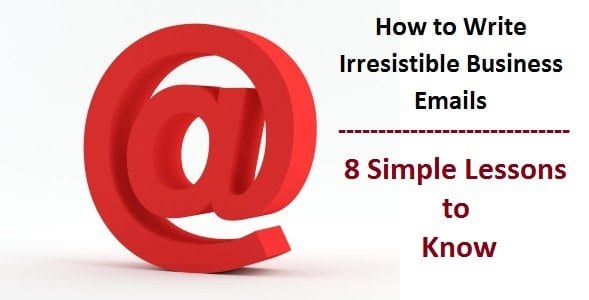Every business email begins with an email opening salutation. In order to ensure that this is professionally done, it is imperative for you to know the appropriate way to go about it. Your email opening salutation determines a lot in the way your email will be perceived. Basically, it sets the tone of your email and can influence how your entire message is received. If the salutation is inappropriate for the recipient, you would have created a negative or unwelcoming signal from the onset of your email. This, in turn, may badly represent what you are trying to say in your email.
Types of Email Opening Salutations
Informal Email Opening Salutations
This is used in business emails when writing to employees (not in all cases), subordinates at the workplace (not in all cases), colleagues, friends or casual correspondence. It is usually formatted thus: “Hello (with or without a first name)” or “Hi (with or without a first name)” or “Hey (with or without a first name)”. The recipient’s first name may also be abbreviated. For example, instead of “Hi Alexander” you may say “Hi Alex”.
As noted, informal email opening salutations is mainly for people who you have a level of informal relationship with or who are your junior at the workplace. However, for employees and subordinates in the office, it may be inappropriate to use informal email opening salutations in certain situations. For example, if you want to send an email to query an employee, there is usually no need for any form of opening salutation. Another instance is an email informing an employee that he or she has been promoted. Here, an opening salutation is necessary; however, it will be a semi-formal one.
Examples of Informal Email Opening Salutations:
- Hello, Hi or Hey
- Hello John
- Hi Joseph (or Joe)
- Hey Alex (or Alexander)
Semi-formal Email Opening Salutations
The semi-formal email opening salutation is used when writing to customers and business partners. It may also be used when writing to employees and subordinates in the workplace. The semi-formal email opening salutation is a combination of “Dear” and the recipient’s first name. Care should be taken, however, when writing to certain customers and business partners, especially the older or elderly ones. Some may not be comfortable when addressed in a semi-informal way.
Also be conscious of clients or business partners who have formal titles like doctors (professional or doctorate), professors, judges, pastors, military personnel, etc. It is best to address these people, elderly clients and business partners using a formal opening salutation.
Examples of Semi-formal Email Opening Salutations:
- Dear John
- Dear Felix
- Dear Kate
- Dear Susan
Formal Email Opening Salutation
This type of opening salutation is used when sending emails to your supervisor, manager, your boss or requesting for a reference. It is also used for emails you use for job search and cover/application letters. The usual format is “Dear” + title of the recipient (Mr., Mrs. or Miss) + first name + surname of the recipient (or surname without the first name of the recipient). It can also be “Dear” + Sir or Madam. If you are applying for a job via email you may also say “Dear” + Human Resources Manager or Hiring Manager.
It is important to note that when addressing people in certain positions or with official titles, that their titles be included. This includes doctors (professional or doctorate), professors, judges, lawyers, pastors, rabbis, military personnel, etc.
Examples of Formal Email Opening Salutations:
- Dear Mr. Samuel Johnson
- Dear Mrs. Godspeed
- Dear Miss Campbell
- Dear Sir
- Dear Madam
- Dear Human Resources Manager
- Dear Hiring Manager
- Dear Barrister Lopez
- Dear Major Buchanan
- Dear Dr. Omar
- Dear Pastor Bruce Holloway
Note that the formal email opening salutations with official titles were all written in full, with the exception of the doctor title. This is the standard format for writing business emails.
Tips for Writing Appropriate Email Opening Salutations
- If you intend to use the formal email opening salutation “Dear Sir or Madam”, ensure you pick only one appropriate title. However, if you are unsure of the recipient’s gender, then use both, that is, you may write “Dear Sir or Madam”. However, when using the formal opening salutation, it is best to address people by their names (or position, like hiring manager) as explained above.
- Still on formal opening salutations, when you know a woman’s name, but you are not sure of her marital status or how she would want to be addressed, avoid using either “Mrs.” or “Miss”. In this case, you may use “Ms.” which does not indicate any marital status. For example, “Dear Ms. Janet Goodman”.
- In a formal setting, when you are uncertain about a recipient’s gender, especially if the person’s name can pass for either a male or female, avoid the gender-specific titles and use “Dear” plus the first name and the surname of the recipient. For example, “Dear Casey Price” or “Dear Taylor Banks”. You may use the person’s official title if there is one.
- If you are having a frequent email conversation with a recipient, especially when it is on the same subject, it will be awkward to keep saying “Dear Sir” or “Dear Ms. Evans” in every reply. You may say “Good Morning” or “Good Afternoon” or just “Greetings” to reply to subsequent emails in both formal and semi-formal settings. While for an informal setting, a simple “Hello” or “Hello Again” or “Hi” will do.
- When sending an email to a group of people, for example, members of your team, your email opening salutation may be informal or semi-formal. For example, “Hello Rick, Chloe, and George” (informal opening salutation) or “Dear Rick, Chloe, and George” (semi-formal opening). Instead of writing all the first names of your team members (especially when they are so many), you may just say, “Hi Team” or “Hello All” (informal) or “Dear Team” or “Dear Friends” (semi-formal).
- An opening salutation in a business email is usually followed by a comma, then your first paragraph. A full-stop may seem appropriate. However, the standard is to use a comma.
For example, Dear Major Buchanan, It is my pleasure to inform you that you are the winner of our Fathers’ Day Special Treat…
When writing to someone whose company or organization you know, but you are not sure of the person’s name, or the spelling of the name, or the person’s gender or official title (if any), then check the company or organization’s website or LinkedIn profile. You may also contact someone you know in the company or an administrative assistant for the details you need.
Conclusion
Finally, when you use a name(s) in a formal or semi-formal opening salutation, ensure you get the spelling(s) right. This is absolutely important. It would be very harmful to the purpose of your email if you misspell a recipient’s name. Therefore, if you are not sure of the spelling of the recipient’s name, it is safer to say “Dear Sir” or “Dear Madam” for a formal setting, and “Greetings” or “Good Morning/Afternoon” for a semi-formal setting.






